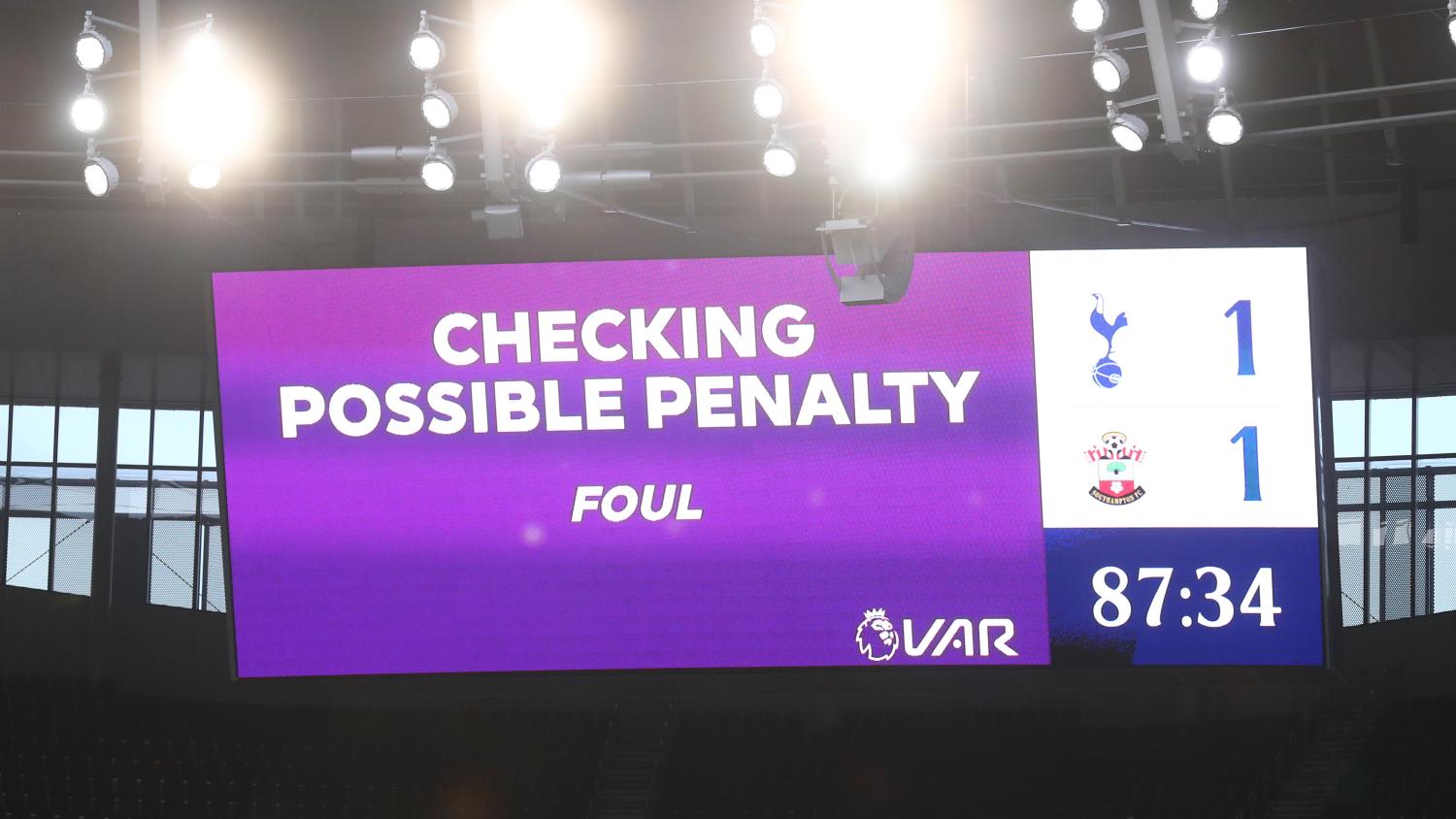What’s your lasting memory of the 2020-21 Premier League season? Is it Zack Steffen lifting the trophy to the heavens? Or is it Bruno Fernandes wheeling away from a penalty, mouth agape in celebration with enough room for a large cantaloupe? Or maybe it’s Jorginho hopping, skipping and prancing to the spot before necking the Chelsea badge?
One thing’s for certain — there were way, way, way too many penalties last year, giving rise to one of the most odious sentences in all of football: “There was contact.”
Somehow the 2020-21 season transformed “there was contact” — in a motherloving contact sport — into meaning “stonewall penalty.” There’s absolutely no rule that says contact, while allowed everywhere else on the field within reason, isn’t allowed in the area, but that somehow became the consensus.
However, this heinous opinion was justified by what was going on out on the pitch — namely a Premier League record of 125 penalties awarded. For a bit of perspective, the 2017-18 season saw 80 penalties. A 56 percent increase doesn’t just point to a slight change in officiating, that’s basically enough to constitute a totally different kind of sport.
Now the good news: It’s never going to happen again.
◆ Marginal offsides
◆ Delaying the flag for offsides
◆ What contact constitutes a foulThere will be three main changes to VAR implementation for the 2021/22 #PL season ➡️ https://t.co/i5Zzed04UL pic.twitter.com/PneL3rfUMS— Premier League (@premierleague) August 4, 2021
According to the Premier League, the art of “buying” a penalty (looking for that contact and going down) is at an end. Referees are now going to look at three different sets of criteria before awarding a penalty: the degree of contact, the consequence of the contact and the motivation of the attacker in reacting to the contact.
“Referees will look for contact and establish clear contact, then ask themselves the question: does that contact have a consequence?” said the EPL’s head of refereeing Mike Riley. “They will then ask themselves a question: has the player used that contact to actually try and win a foul penalty? So it’s not sufficient just to say: ‘Yes, there’s contact.’
“I think that the feedback we’ve had from players, both attackers and defenders, is that you want it to be a proper foul that has a consequence, not something that somebody has used slight contact to go over, and we’ve given the penalty to reward it.”
It wasn’t touched on by the Premier League, but if you’re watching a game with someone and they say the phrase “there was contact,” you’re now encouraged to look them straight in the eye and ask them to leave.
Also, as had been previously discussed, the Premier League is switching from the one-pixel-wide lines of the VAR to the “thick” broadcast lines used by TV. This way, attackers get the benefit of the doubt rather than being ruled offside because of the position of their armpit.
“We’ve now reintroduced the benefit of the doubt to the attacking player,” Riley said. “Effectively what we have given back to the game is 20 goals that were disallowed last season by using quite forensic scrutiny. It’s the toenails, the noses of the players that last season were offside — this season they will be onside.”
Finally, assistant referees will be quicker to flag for offside during build-up play, meaning that we won’t have to hear a commentator say “the flag stayed down but that’s what they’re instructed to do these days” before the co-commentator goes on a rant about how they should still flag for obvious offside instances for the 1,000th time.



